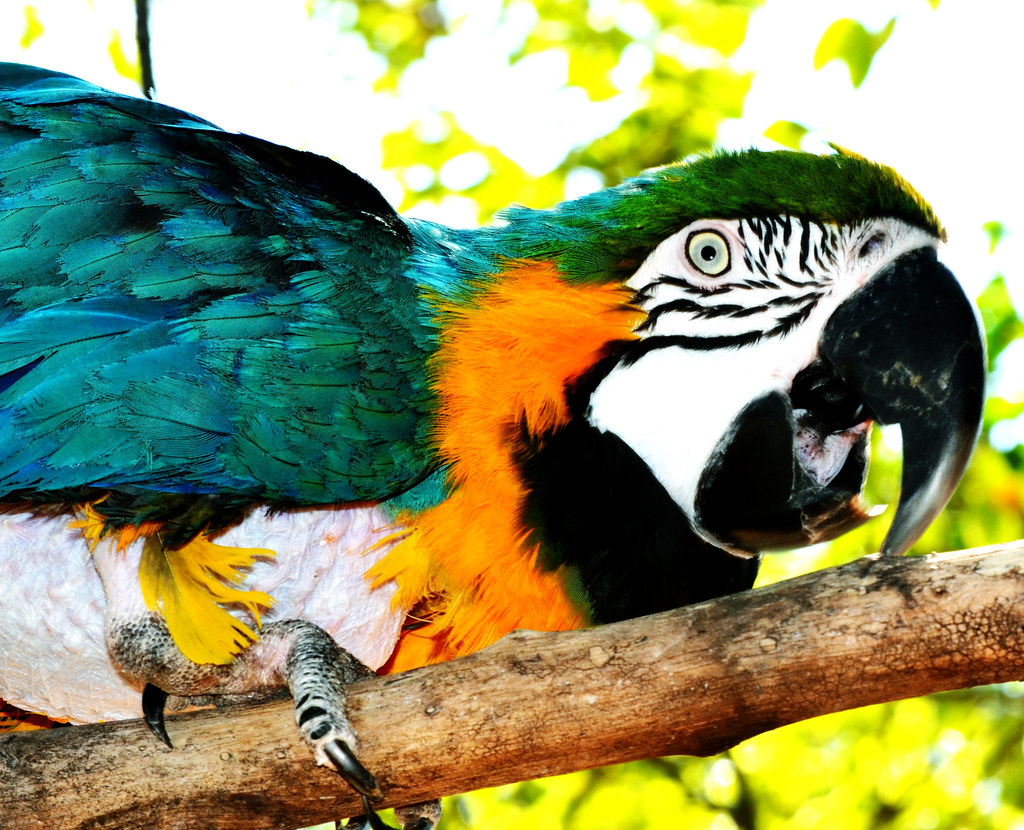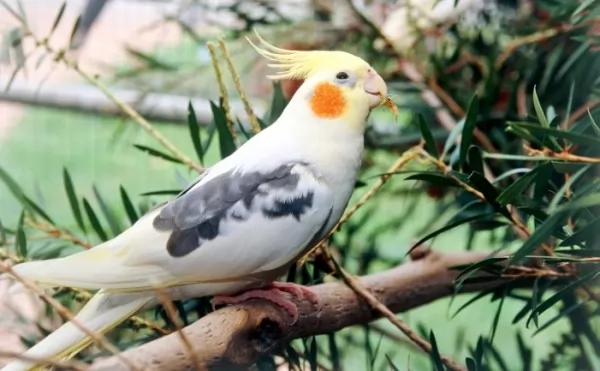The problems that parrots face in captivity, Parrots, with their vibrant plumage and charismatic personalities, have become popular companions in households worldwide. However, behind the colorful facade lies a series of challenges that parrots endure in captivity, raising important questions about their well-being and the responsibilities of those who keep them.

The problems that parrots face in captivity
Paragraph 1: The Social Dilemma One of the most pressing issues parrots face in captivity is the disruption of their natural social structures. In the wild, these highly intelligent birds form complex social bonds with their flock, relying on communal living for survival. Captive environments often isolate them from their kind, leading to loneliness and behavioral issues.
Paragraph 2: Limited Living Spaces Contrary to their expansive natural habitats, parrots in captivity often find themselves confined to relatively small cages. This restricted space not only hampers their physical health but also contributes to stress and boredom, triggering adverse behaviors such as feather plucking and incessant squawking.
Paragraph 3: Nutritional Nuisances In the wild, parrots have a diverse diet that includes a variety of fruits, seeds, and nuts. Unfortunately, many captive parrots are subjected to monotonous and nutritionally deficient diets, which can lead to health problems such as obesity and malnutrition. Owners must prioritize providing a balanced and species-appropriate diet to ensure the well-being of their feathered friends.
Paragraph 4: Lack of Mental Stimulation Parrots thrive on mental stimulation and problem-solving activities, essential for their cognitive health. In captivity, the absence of such stimuli can result in boredom and depression. To mitigate this, owners should invest time and effort in engaging their parrots through interactive toys, puzzles, and regular out-of-cage playtime.
Paragraph 5: Veterinary Care Challenges Medical care for parrots in captivity poses unique challenges. These birds are experts at concealing signs of illness, making it difficult for owners to detect health issues in a timely manner. Regular veterinary check-ups and a keen understanding of parrot behavior are crucial for ensuring early intervention and proper care.
Paragraph 6: The Trade Conundrum The exotic pet trade contributes significantly to the challenges faced by parrots in captivity. Illicit trafficking and unethical breeding practices can lead to the mistreatment of these birds, both during capture and in subsequent care. Advocacy for ethical sourcing and responsible ownership is paramount to combatting this aspect of the parrot captivity problem.
Conclusion: As we revel in the joy and companionship that parrots bring to our lives, it is imperative to recognize and address the challenges they face in captivity. Responsible ownership, proper education, and advocacy for parrot welfare are crucial steps in ensuring these intelligent and captivating birds thrive in the environments we provide for them. Only through a collective effort can we create conditions that promote the physical and mental well-being of our feathered friends, allowing them to soar both in spirit and in flight.
The problems that parrots face in captivity
“Empowering Parrot Owners: Tips for Responsible and Compassionate Care”
Introduction: Owning a parrot is a rewarding experience, but it comes with a set of responsibilities. To ensure the well-being of these intelligent and social birds, consider the following tips for responsible and compassionate care.
- Social Enrichment: Foster a Flock Feeling Parrots thrive on social interaction. If you have a single parrot, dedicate time each day to engage in interactive play, conversation, and affection. For those with multiple birds, monitor their social dynamics to prevent conflicts and promote a harmonious environment.
- Spacious Living Quarters: Room to Spread Their Wings Provide a spacious and well-designed cage for your parrot. The cage should allow for unrestricted movement, accommodate toys and perches, and offer a comfortable retreat. Regular out-of-cage time is essential to prevent boredom and encourage physical activity.
- Diverse and Nutrient-Rich Diet: Feed the Rainbow Mimic the variety found in a parrot’s natural diet by offering a diverse range of fruits, vegetables, nuts, and high-quality pellets. Avoid high-fat and sugary treats, and consult with a veterinarian to create a nutritionally balanced diet suitable for your parrot’s species.
- Stimulating Toys and Activities: Exercise for the Mind Keep your parrot mentally engaged with a variety of toys and activities. Puzzle feeders, interactive toys, and objects that encourage foraging simulate the mental challenges parrots encounter in the wild. Rotate toys regularly to maintain interest.
- Regular Veterinary Check-ups: Preventive Healthcare Schedule routine check-ups with an avian veterinarian to monitor your parrot’s health. Birds often conceal signs of illness, making early detection crucial. Vaccinations, parasite control, and dental care should be part of the overall healthcare plan.
- Understanding Body Language: A Silent Language Learn to interpret your parrot’s body language. Subtle cues such as feather positioning, eye dilation, and vocalizations can indicate stress, contentment, or illness. This awareness enables you to address issues promptly and strengthen your bond.
- Responsible Breeding Practices: Promoting Ethical Ownership If considering adding a parrot to your family, choose reputable breeders who prioritize the well-being of the birds. Avoid supporting the illegal wildlife trade and adopt from reputable rescue organizations. Responsible ownership begins with ethical sourcing.

By incorporating these tips into your daily routine, you can create an environment that promotes the physical and mental health of your parrot. Remember, responsible ownership is a lifelong commitment, and by providing proper care, you contribute to the well-being of these remarkable companions.
In conclusion, acknowledging and addressing the problems that parrots face in captivity is paramount for cultivating a compassionate and responsible bond with these intelligent creatures. By actively seeking to understand and mitigate these challenges, we can strive to create environments that prioritize the physical and psychological well-being of our feathered companions, ensuring a fulfilling and harmonious coexistence.
Author Profile

- Isabella Robert
- Hello, I'm an American writer named Isabella. I love writing about birds and pets, and I have a deep passion for beautiful birds. I am currently studying veterinary medicine, and I am 21 years old, hailing from Texas.
Latest entries
 lutino alexandrineMarch 5, 2024The Lutino Cockatiel: A Yellow Gem in the Avian World
lutino alexandrineMarch 5, 2024The Lutino Cockatiel: A Yellow Gem in the Avian World UncategorizedDecember 28, 2023How to know the age of a parrot
UncategorizedDecember 28, 2023How to know the age of a parrot UncategorizedOctober 30, 2023The Parrot Gender Paradox: What You Need to Know Before Choosing a Bird
UncategorizedOctober 30, 2023The Parrot Gender Paradox: What You Need to Know Before Choosing a Bird UncategorizedOctober 30, 2023The problems that parrots face in captivity
UncategorizedOctober 30, 2023The problems that parrots face in captivity





